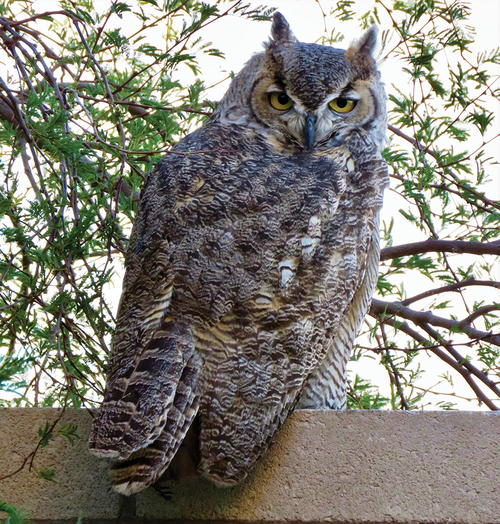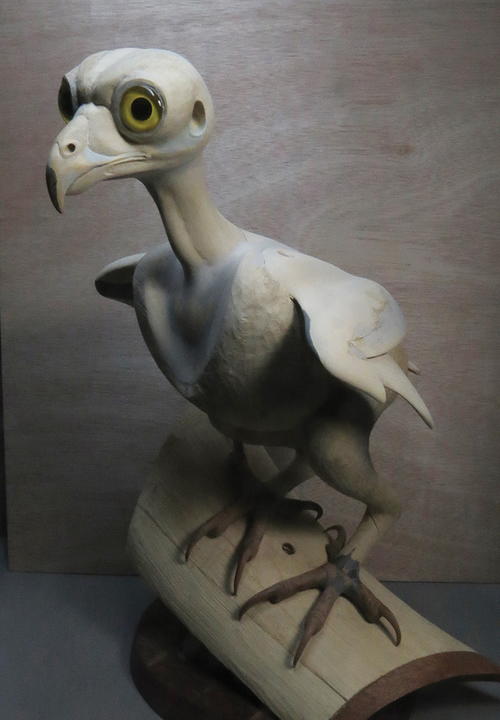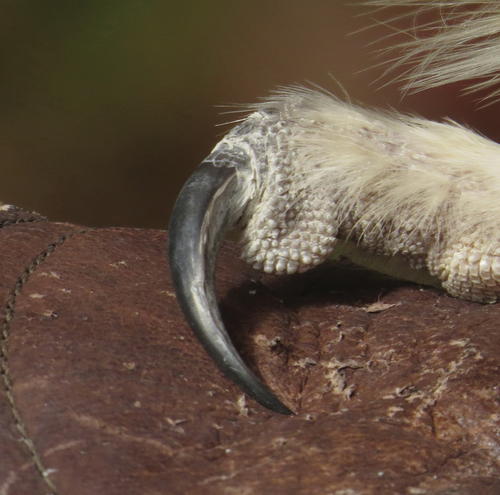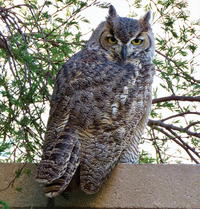Exclusive Excerpt from Half-Size Great Horned Owl

Exclusive Excerpt from Half-Size Great Horned Owl by Keith Mueller
By weight, the great horned owl (Bubo virginianus) is the second largest owl (behind the snowy owl) in North and Central America. The great gray owl is taller, but weighs only half as much. In the scientific name, Bubo means “large hooting and horned” and virginianus refers to the area where the species was first recognized. There are 10 subspecies, ranging from the North American subarctic to the upper southern reaches of Central America and a few areas in South America. The main differences among them are size and plumage.
Great horned owls can feed all night, but they are actually crepuscular, feeding in the low light conditions just after sunset and just before dawn, except during mid-winter during nesting season when they are active all day. Their extensive diet includes rodents, frogs, other birds and owls, raccoons, and skunks. This owl is a formidable hunter, with specially adapted feathers that allow for silent flight, large feet and talons for great strength for holding prey, and large eyes for night vision.
More About the Great Horned Owl
-
The female is the larger sex, ranging from 18 to 25 inches in length. The wing chord can be as long as 18 inches on larger females. The owls are very compact, with a muscular frame covered by dense layers of soft, fluffy feathers. You might find it hard to believe how small the owl is under all of its feathers, as its skeleton demonstrates.
-
The large feet, including talons, can measure up to five and a half inches wide when fully opened. An interesting feature of great horned owls is a semi-pectinate talon located on the inner side of the second (or middle) talon. This feature is more like a rough-edged ridge rather than the fully developed comb-like extension on a barn owl’s talon. It is also found on some herons and nightjars. It is believed that barn owls use this feature for grooming and preening. It is unclear why the great horned owl has it. It might be used for holding prey.
Read NextThe Illustrated Bald Eagle





